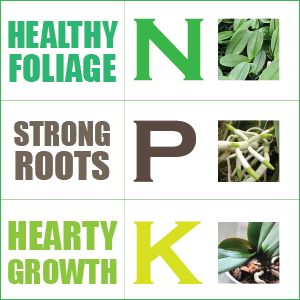Analyzing Me And Your Soil
Testing your soil is the smart way to start and maintain your garden. Only by knowing the nutrient levels in your soil can you determine what you need to add to your garden in order to maximize growth. And yes
everyone's house can be a bit different.
A good quality Soil Test Kit results will give you the necessary information to make the correct fertilizer selections throughout the gardening season.
Knowledge of nutrient levels in your soil gives you an incredibly useful tool. Think of this information as you would any other necessary gardening tool and use it in achieving your goal of a successful garden.
What type of soil your garden contains is important to know because it influences how well nutrients and moisture will be maintained by the soil. There are two basic extremes in soil texture: sand and clay.
Clay soil has small, fine particles and will feel smooth between your fingers. Clay soil holds moisture and nutrients well, but can be difficult to dig or till during garden preparation because of its tendency to clump.
Most garden soils will be a combination of sand and clay. The ideal combination of sandy and clay soil is referred to as loam. Loam combines the beneficial properties of each soil type and provides your plants with the best growing environment. Loam is sandy enough to allow for drainage and air circulation, but also contains enough clay to retain adequate levels of moisture and nutrients. If your garden soil is not the perfect loam, don't worry most are not.
Now that you know what type of soil your garden contains, let's talk about the importance of testing the pH, Nitrogen, Phosphorus, and Potassium levels in your soil. Each of these elements performs a different function in the growth of plants.
PH-pH is not a nutrient; it is a measure of soil acidity or alkalinity. The pH level of your soil determines how well the plants are able to use the nutrients in the soil. In general, the ideal pH range for garden soil is 6-7. At this pH level, plants are able to draw adequate amounts of nutrients from the soil efficiently.
When the pH level of the soil is out of this range, plants are not able to use the nutrients in the soil efficiently. So a garden with good levels of Nitrogen, Phosphorus, and Potassium may still not live up to expectations if the pH level is out of range.
Although the nutrients are there, an incorrect pH level will prevent the plants from drawing what they need from the soil. Because soil pH has a tendency to drop over time, it is important to test it regularly.
Nitrogen-Nitrogen in your soil will affect the part of the plant that is above ground, especially the green, leafy sections. Correct levels of Nitrogen will promote healthy green foliage. Therefore, you will find that vegetables such as lettuce and spinach, as well as lawns, have high Nitrogen requirements.
Nitrogen is one of the most difficult nutrients to maintain in your garden as it is easily washed away by rain water. The Nitrogen level in your soil can, therefore, deplete quickly. For this reason, it is especially important to test regularly for Nitrogen.
Phosphorus-Phosphorus in soil is essential for strong root formation and root system development. Phosphorus also contributes to quicker flower and fruit production by helping to protect the plant against disease and poor weather conditions.
Potassium-Potassium is responsible for seed formation and germination in flowers, fruits, or vegetables. Obtaining maximum vegetable, flower, or fruit formation requires correct levels of potassium.
Soil testing is the only way to determine the levels of these nutrients in your soil. Results from your Soil Test Kit will help you make educated decisions when starting and maintaining your garden.
 These elements to adjust pH can be found in your local lawn and garden
retail store. They will be sold under different brand names, so look for
ingredients on the package to find the correct pH adjuster.
These elements to adjust pH can be found in your local lawn and garden
retail store. They will be sold under different brand names, so look for
ingredients on the package to find the correct pH adjuster. Fertilizers that are pre-mixed are rated on their Nitrogen, Phosphorus, and Potassium contents. The ratings on a fertilizer package are always in this order: Nitrogen (N), Phosphorus (P), and Potassium (K). Therefore, the numbers specified on a fertilizer package (
It is easy to find a pre-mixed fertilizer selection that will have a nutrient combination to suit the needs of your
soil. Simply look at your soil test results and identify which nutrient levels need to be increased. If your test results show that you need to increase your Nitrogen level, but your Phosphorus and Potassium levels are sufficient, look for a fertilizer selection that has a high N level and low or no P and K (25-5-5 or 25-0-0, for example). Or if all of your nutrients need to be increased, look for a fertilizer that contains all three nutrient levels in relatively equal amounts (20-20-20 or
Now you see when you stopped me at CVS or Exxon I couldn't really answer your question, we would've both been late!! Until next time…Happy Gardening!!!
Jimmie


No comments:
Post a Comment